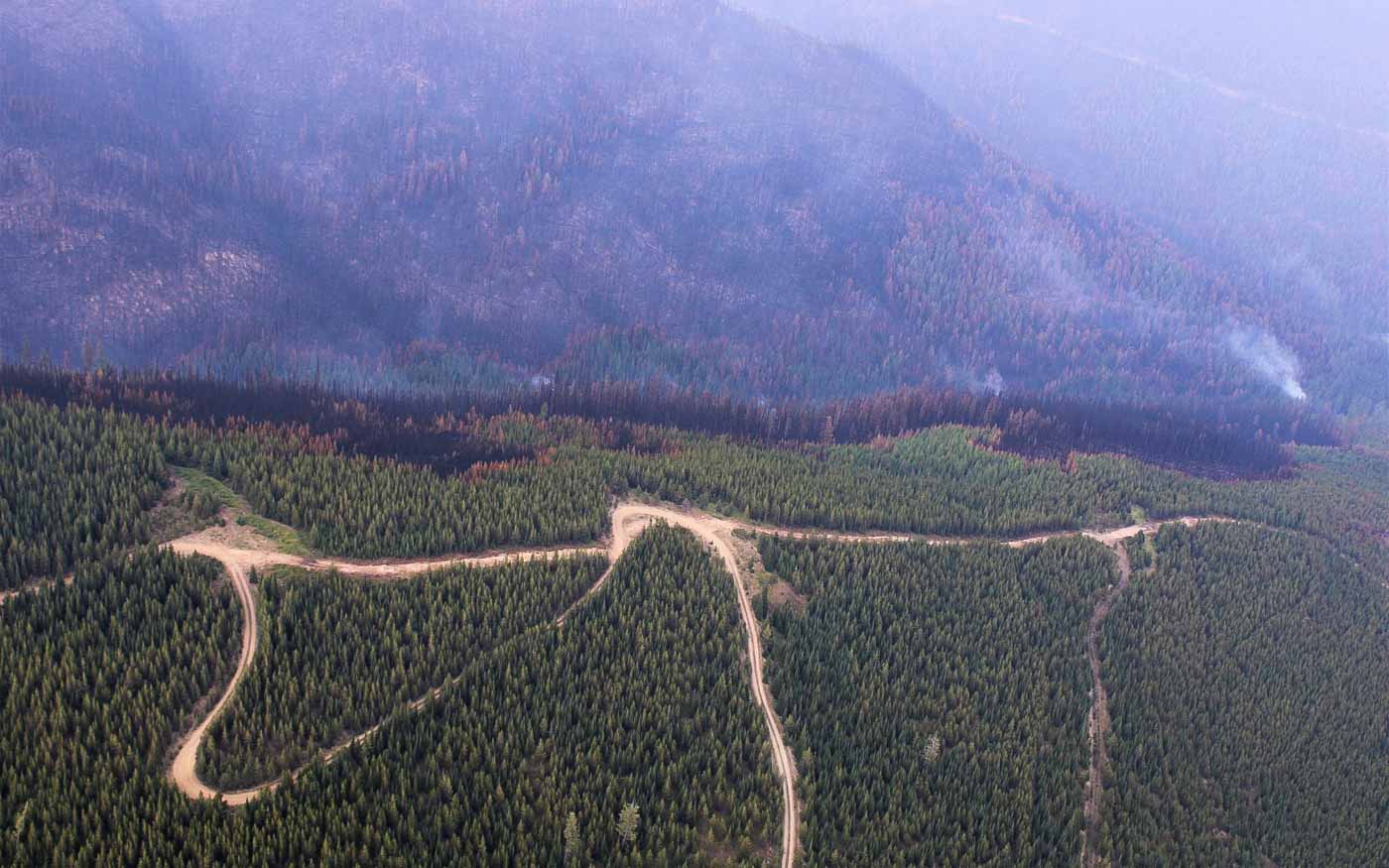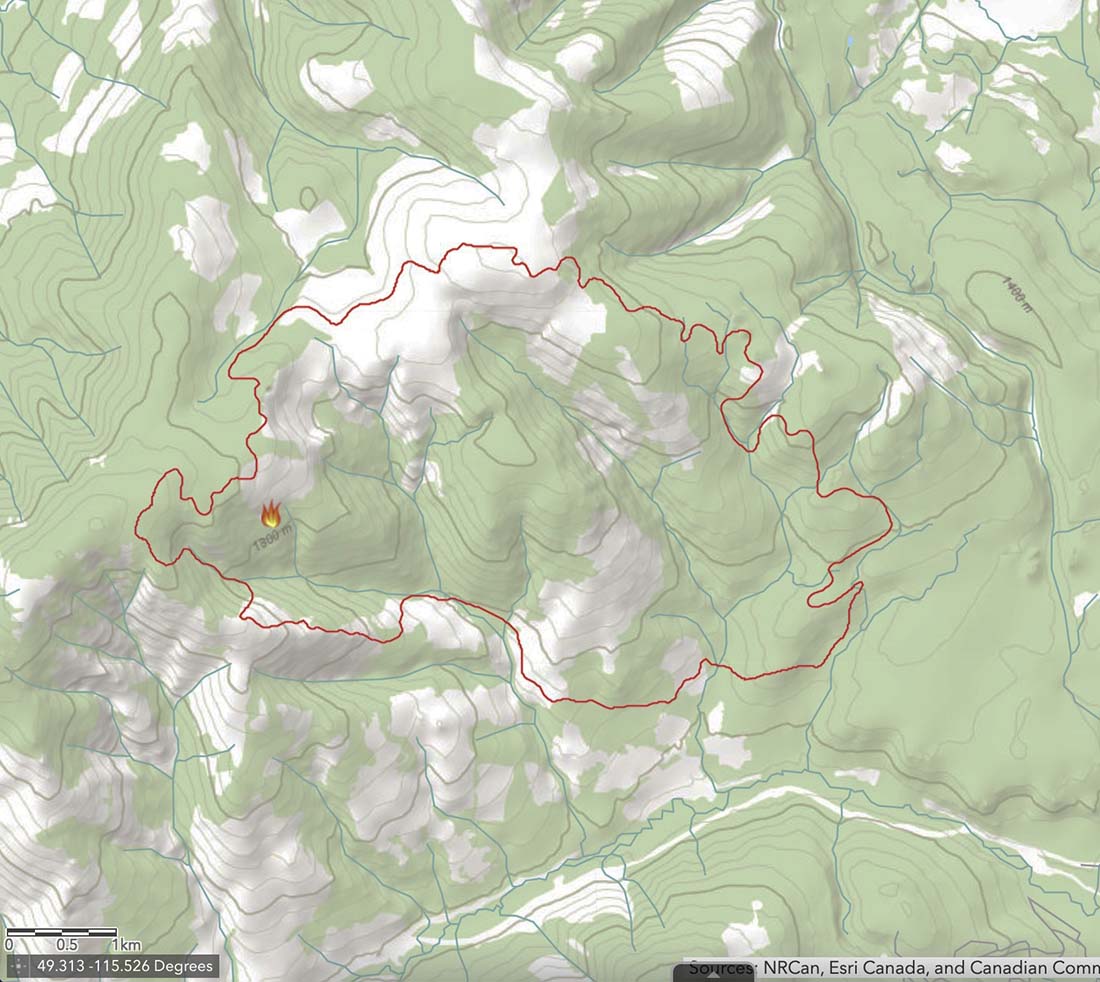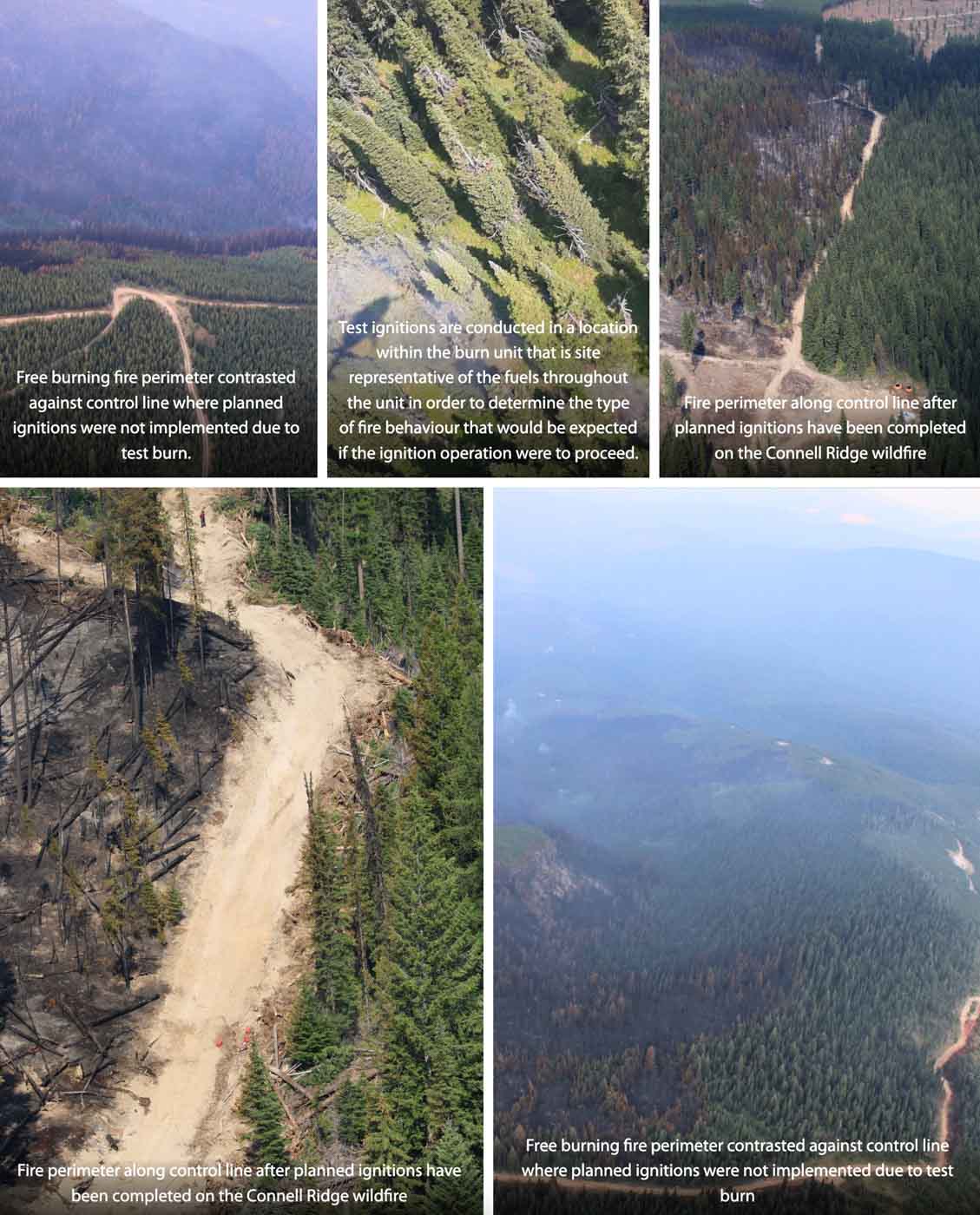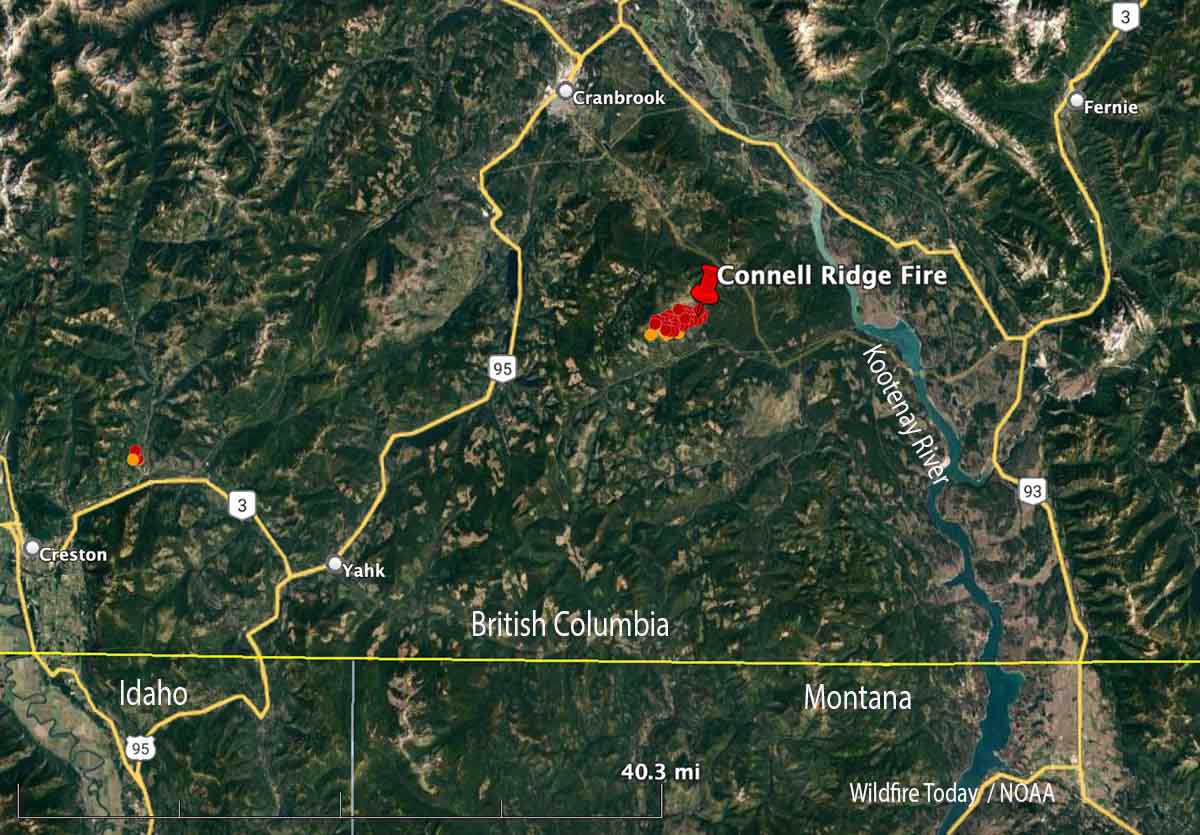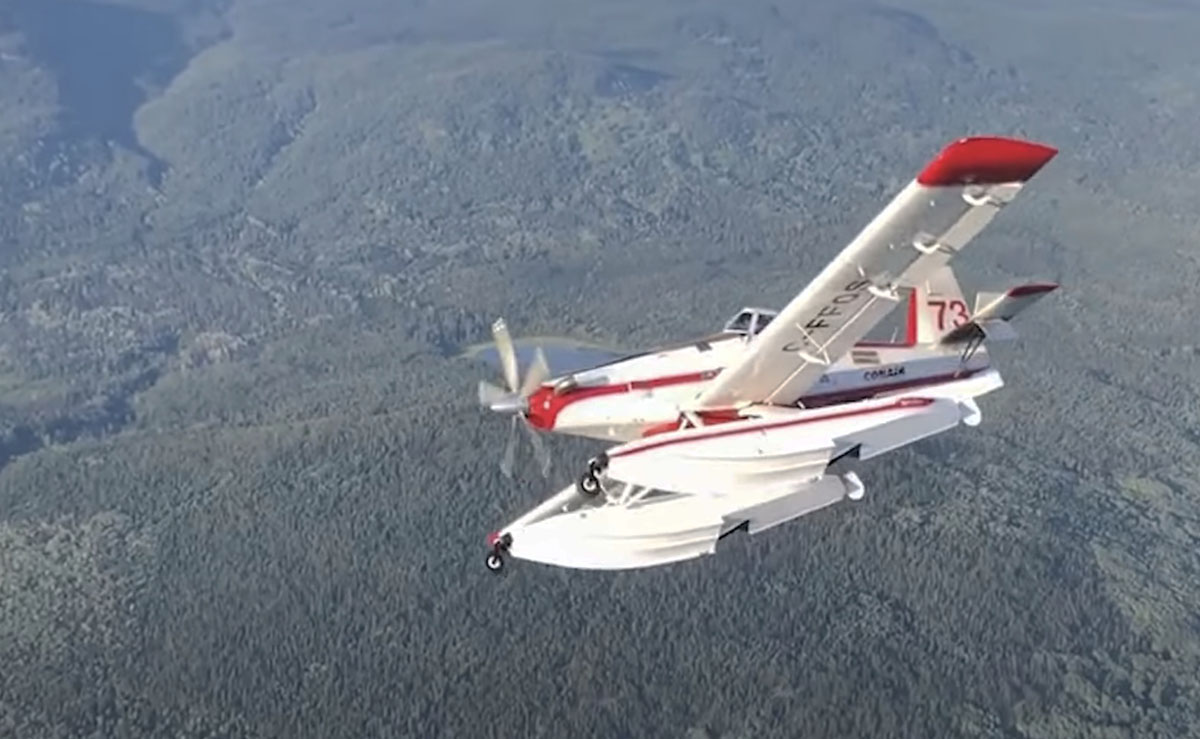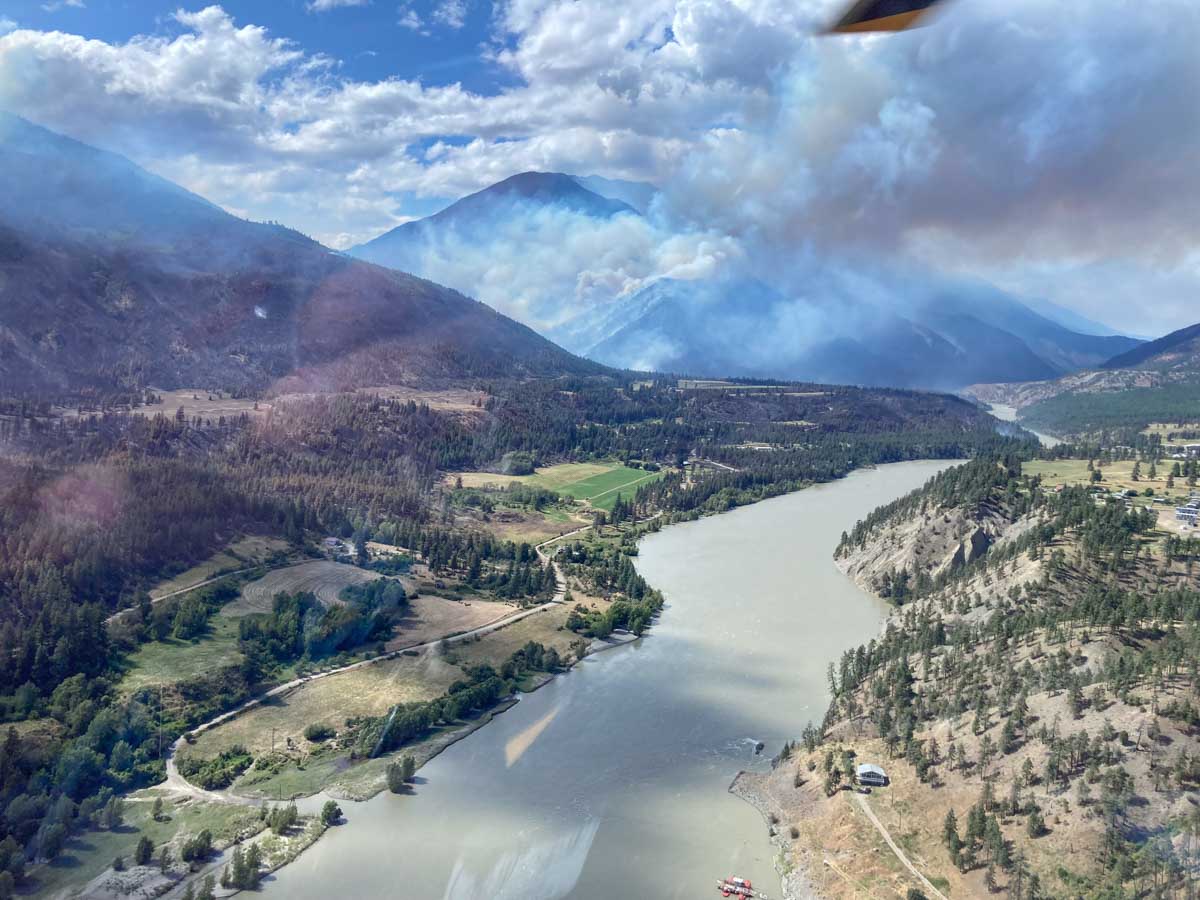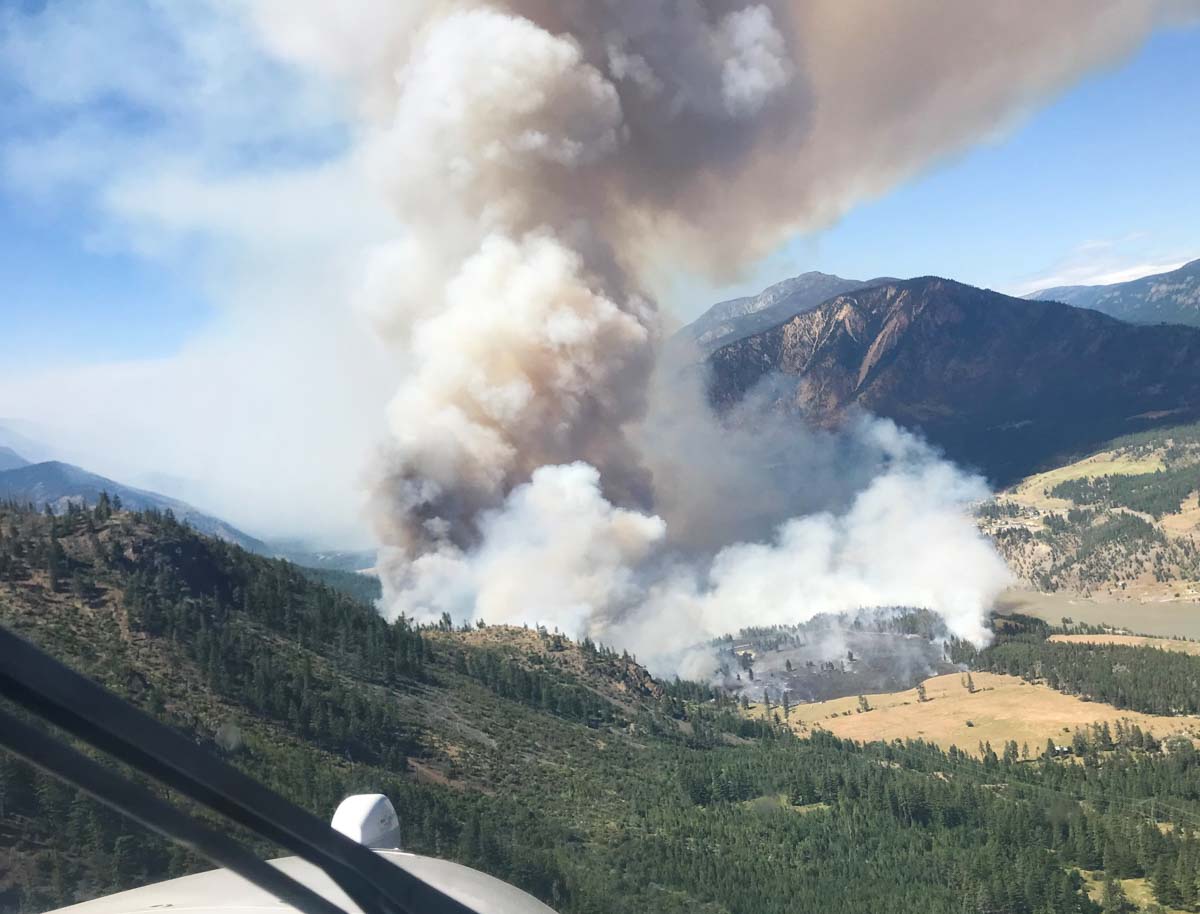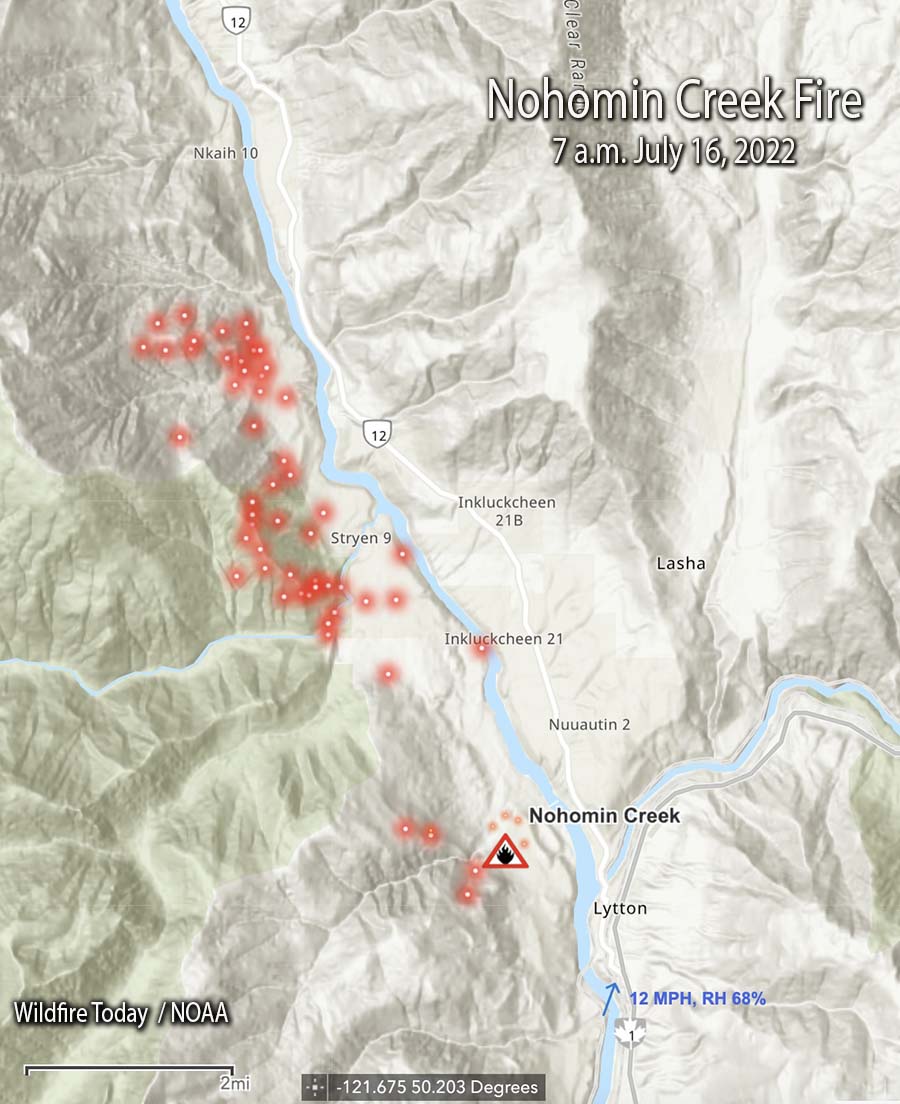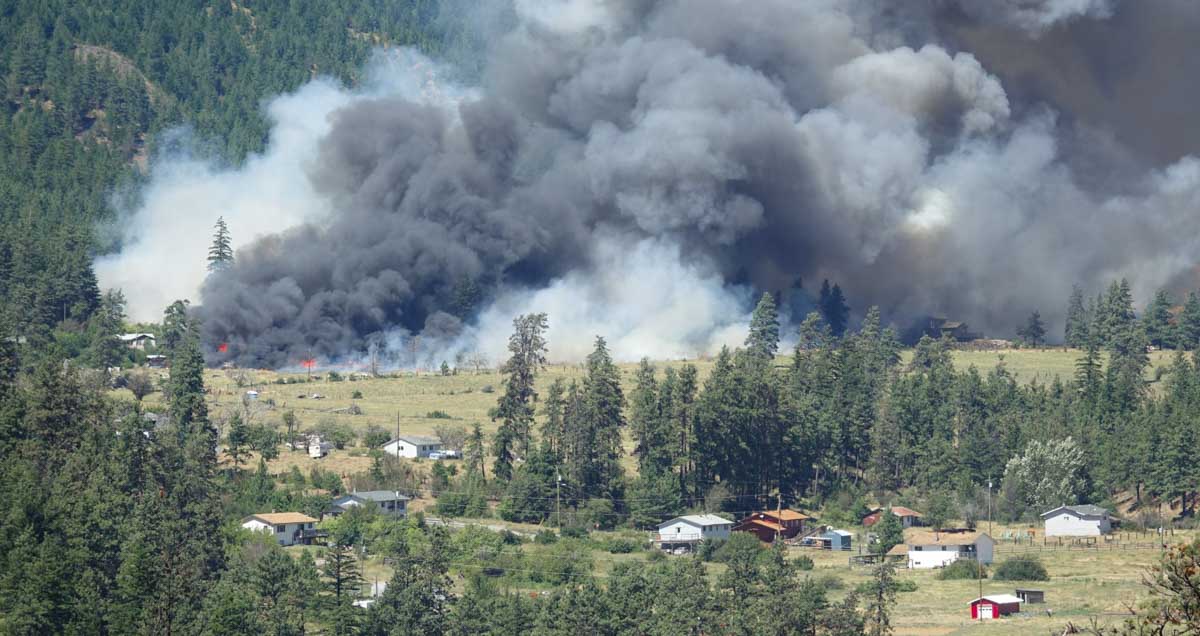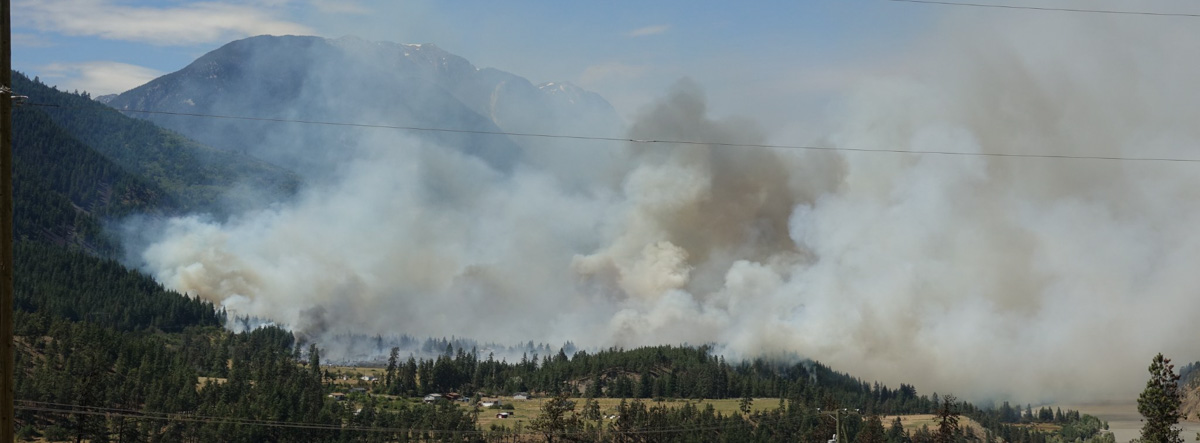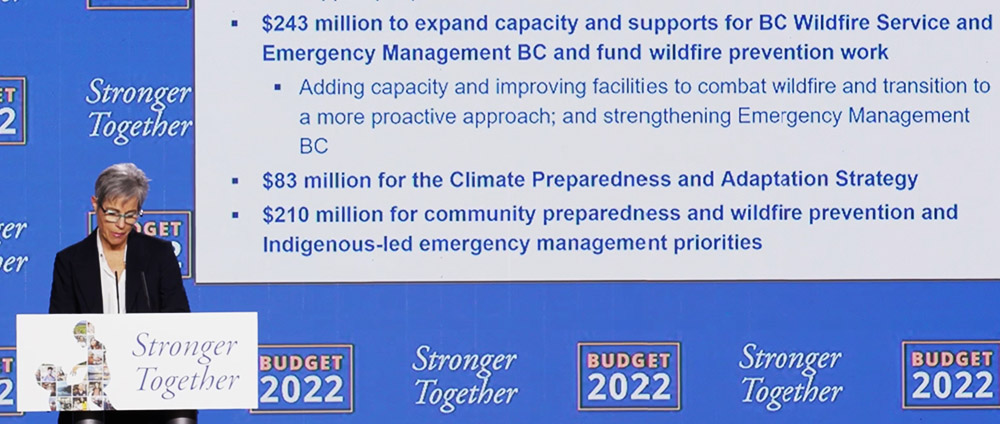UPDATE 05/06/2023: Three wildfires burning near the boundary between British Columbia and Alberta have forced evacuation orders and an alert. Two of the fires are in the Peace River region, including the Red Creek Fire, covering 1,550 hectares (3,830 acres) northwest of Fort St. John, B.C., about 1,200 kilometres (745 miles) northeast of Vancouver.
CBC Canada reported that the evacuation order covers 61 homes in the area; Goodlow, B.C., and the surrounding region are also under evacuation orders ahead of the Boundary Lake Fire, which covers an area of 19 square kilometres (~4700 acres).
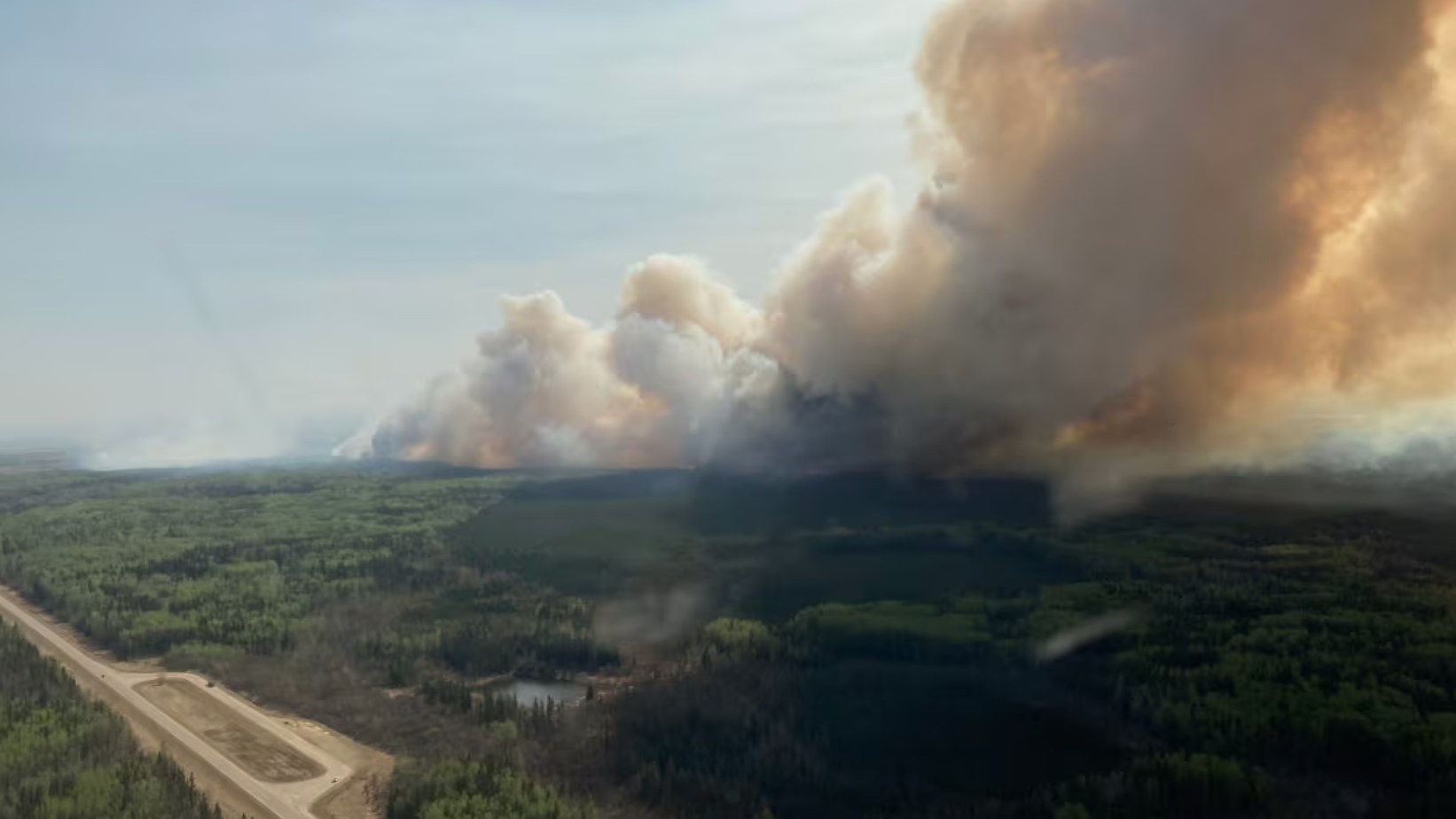
Dozens of new wildfires were discovered across Alberta on Thursday amid high temperatures, dangerously dry conditions, and high winds. More than 10,000 people across Alberta are now affected by mandatory evacuation orders, according to a Global News Canada report.
Fire officials updated many Alberta Emergency Alerts throughout the day as the fires grew and threatened more properties.
An evening update from Alberta Wildfire said there were 72 active wildfires across the province — but in the hours after that bulletin, even more fires showed up on the government agency’s live dashboard. As of 11 p.m, it showed 79 fires, with 19 out of control; 25 were caused by humans, five by lightning — and the rest were still under investigation.
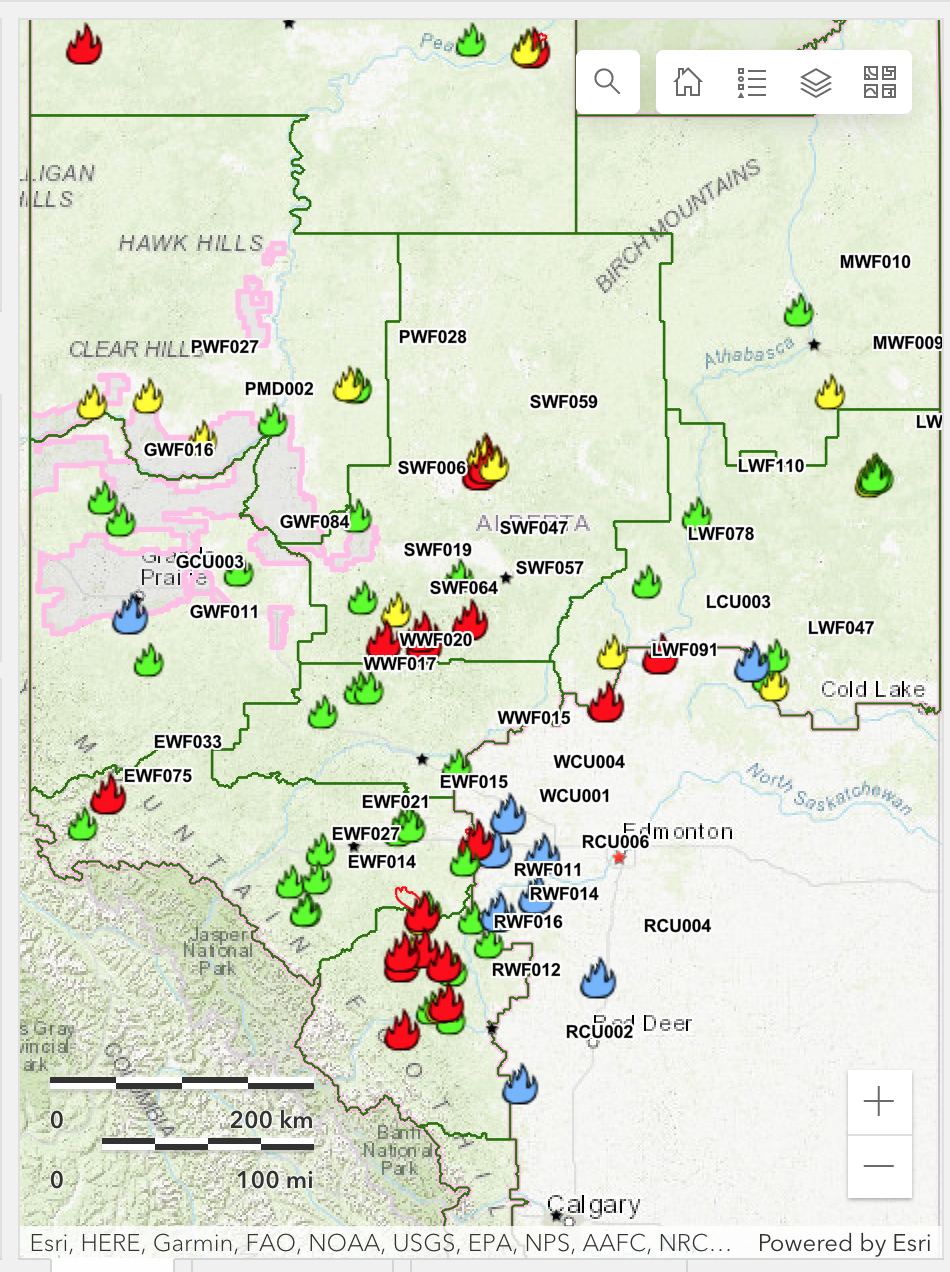
CBC Canada reported that one out-of-control fire has forced the evacuation of thousands of people from Drayton Valley and Brazeau County in west-central Alberta.
“Bring important documents, medication, food, water and supplies for at least three days,” town officials told 7,200 residents on its Facebook page late Thursday. “Take pets with you.”
The City of Edmonton has set up a reception centre for evacuees at the Expo
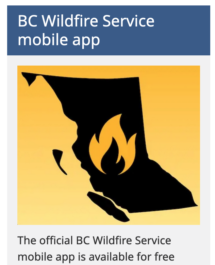
Centre in Edmonton. Bart Guyon of Brazeau County has been coordinating with the area’s fire chief to ensure county residents have the latest information and are able to evacuate swiftly. “It’s kind of like waking up in the middle of a nightmare,” Guyon said.
“Tactical evacuations are being done. This wildfire primarily affects oil and gas industry, but anyone within the area must evacuate,” the emergency alert said.
The evacuations in Brazeau County and Drayton Valley are the latest developments in a week that has seen a series of wildfires across central and northern Alberta. Many are burning out of control in hot, dry and windy conditions.
On Thursday, the fire in the Fox Lake area forced thousands of people from their homes. According to an update from Alberta Wildfire on Thursday afternoon, the wildfire covers about 4,400 hectares (~11,000 acres). Alberta Wildfire has forest area updates and fire data online, with maps and annual statistics on its Wildfire Status Dashboard website.

